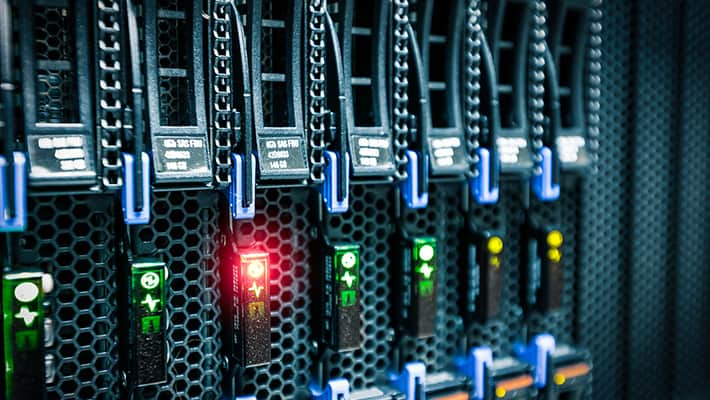Key logging is the process of tracking and recording keystrokes on a computer. A key logger can be either a hardware device or a software program. Key logging can be used for legitimate purposes, such as monitoring employee activity or detecting fraud, or it can be used for malicious purposes, such as stealing passwords or other sensitive information.
What is a Keylogger? What Does it Do?
Key logging is the act of tracking and recording keys that are typed into a keyboard. This information can then be used to reconstruct what was typed, and can be used to track a person’s activity or steal sensitive information.
There are many different ways to keylog, including hardware devices that plug into the keyboard, software that runs in the background, or even malicious code injected into legitimate websites.
Key logging is a serious threat to both personal and corporate security, and it’s important to be aware of the risks.
If you think you may be a victim of key logging, there are some things you can do to protect yourself. First, never type your password into a field that could be monitored by someone else.
Second, use a strong password that is difficult to guess. Finally, keep an eye out for strange behavior on your computer, such as unexplained pop-ups or new programs appearing out of nowhere. If you suspect you’ve been key logged, report it to your IT department or security team immediately.
How to Prevent Keylogging
What is Keylogging?
Keylogging is the act of tracking, logging, and monitoring keystrokes on a computer or other digital device. This can be done for malicious purposes, such as stealing passwords or personal information, or for security and monitoring purposes.
There are many ways to keylog a device, including hardware devices that can be attached to a computer or placed in between the keyboard and the computer, software that can be installed on a computer or mobile device, and even web-based services that can track keystrokes online.
How to Prevent Keylogging?
There are several things you can do to prevent keylogging on your devices:
Use physical security measures: If you are concerned about someone physically attaching a hardware keylogger to your computer, you can use security measures to deter them. For example, keep your computer in a secure location where only authorized people have access. Use tamper-evident seals on doors and cases to deter tampering.
Inspect devices before using them: If you are using a public computer or device (e.g., at an Internet café), inspect it for signs of tampering before using it. Look for loose screws, unusual markings, or anything else that looks out of place. Cover your hands when typing: If you are worried about someone using a concealed camera to record your keystrokes, you can cover your hands when typing confidential information.
This will prevent the person from seeing what keys you are pressing. Use anti-keylogging software: Anti-keylogging software is designed to detect and block attempts at keylogging on your devices. Some anti-virus programs include anti-keylogging features; others are available as standalone programs (for both Windows and Mac).
Be aware of social engineering attacks: Social engineering attacks are another way that attackers can try to get access to your confidential information without resorting to technical means like keyloggers.
Keystroke Meaning
Keystrokes are the basic unit of input in computing. A keystroke is generated when a user presses or releases a button on a keyboard. Keystrokes are used to enter text, numbers, and other commands into computers and other devices.
There are different types of keystrokes, depending on the function they perform. For example, alphanumeric keys generate characters that can be used to form words and sentences, while control keys issue commands that tell the computer what to do.
Some keyboards also have special keys that perform specific functions.
These include keys for opening and closing programs, navigating menus, and controlling the mouse pointer.
Keylogger Download
A keylogger is a type of surveillance software that tracks and records every keystroke made on a computer’s keyboard. Keyloggers can be used for legitimate purposes, such as monitoring employee activity or recovering lost data, but they can also be misused to steal sensitive information like passwords and credit card numbers.
There are two main types of keyloggers: hardware-based and software-based.
Hardware-based keyloggers are physical devices that are attached to the keyboard or computer itself, while software-based keyloggers are programs that run in the background and record everything that is typed into the computer.
Keyloggers can be very difficult to detect, especially if they are installed as part of a malware infection. However, there are some signs that may indicate the presence of a keylogger, such as strange system behavior or unexpected changes in performance.
If you suspect that your computer has been infected with a keylogger, it is important to run a malware scan as soon as possible to remove the threat.
How to Detect Keylogger
A keylogger is a type of malware that can be used to track everything you type on your keyboard, including passwords and sensitive information. While this may sound like a serious security risk, there are actually several ways you can detect and remove keyloggers from your computer.
One way to check for keyloggers is by using a free anti-malware program like Malwarebytes or Spybot Search & Destroy.
These programs will scan your computer for any malicious software, including keyloggers. If they find anything, they’ll give you the option to remove it.
Another way to detect keyloggers is by monitoring your computer’s activity closely.
If you notice strange things happening – like programs opening and closing on their own, text appearing in weird places, or sudden changes in performance – it could be a sign that a keylogger is present. To be extra safe, you can create a “system restore point” before making any changes to your computer; that way, if something does go wrong, you can always revert back to a previous version of your system.
If you think there’s a chance that your computer has been infected with a keylogger (or any other type of malware), the best thing to do is run a full scan with an anti-malware program and then follow up with some manual checks.
With some vigilance and care, it’s easy to keep your computer safe from harm!
Keylogging Software
Keylogging software is a type of surveillance software that tracks and records every keystroke made on a computer. This data can then be accessed by the person who installed the software, usually without the knowledge or consent of the user.
Keylogging software is sometimes used legitimately, for example by employers to monitor employee activity on company computers, or by parents to keep track of their children’s online activity.
However, it can also be used maliciously, for example to steal passwords or other sensitive information.
If you are concerned that someone may be using keylogging software to spy on you, there are a few things you can do to check. First, take a look at your keyboard and see if there are any unusual devices attached.
If you suspect that someone has installed keylogging software on your computer, you can try running an anti-malware scan. Finally, be aware of what information you type into your computer and only enter sensitive information into websites that you trust.

Credit: www.kaspersky.com
What is Key Logging?
A key logger is a type of surveillance software that tracks and records each keystroke made on a specific computer’s keyboard. This data can then be retrieved by the person who installed the keylogger, giving them access to everything that was typed on the keyboard, including passwords, credit card numbers, and other sensitive information.
There are both hardware and software-based keyloggers.
Hardware-based keyloggers are external devices that are plugged into the computer’s USB port or PS/2 connector. Software-based keyloggers are programs that are installed onto the computer and run in the background without being detected. Both types of keyloggers can be difficult for users to detect, which is why they’re often used by hackers and criminals to steal people’s personal information.
If you’re concerned that someone may have installed a keylogger on your computer, there are a few things you can do to check. For instance, you can look for unusual processes running in your Task Manager, as well as any unfamiliar programs installed on your system. You can also scan your computer for malware using an anti-virus program.
If you suspect that someone has been monitoring your activity through a keylogger, it’s important to change all of your passwords and take other steps to protect your online accounts.
What is Keylogger With Example?
A keylogger is a type of surveillance software that tracks and records each keystroke made on a targeted device. Keyloggers can be used to monitor employee activity, track children’s internet usage, or steal sensitive information like passwords and credit card numbers. Some keyloggers are even designed to record screenshots or take webcam footage.
For example, FlexiSPY is a commercial keylogger that can be installed on computers, phones, and tablets. Once installed, FlexiSPY secretly records all activity on the target device and sends the data to the person who installed it. The recorded data can then be accessed from any web browser.
What is Keylogger And Its Types?
A keylogger is a program that records the keys struck on your keyboard, usually in order to capture passwords or other sensitive data. Some keyloggers can also take screenshots of your screen or record your mouse movements. There are many different types of keyloggers, but they can broadly be classified into two categories: hardware-based and software-based.
Hardware-based keyloggers are physical devices that attach to your keyboard (usually between the keyboard and the computer) and record the keys that are struck. These devices can be difficult to detect, since they don’t install any software on your computer. Software-based keyloggers, on the other hand, are programs that run on your computer and record your keystrokes.
These programs can be installed without you knowing, making them difficult to detect as well.
Most anti-virus programs will not detect keyloggers, so it’s important to use a program specifically designed to find them. Spybot Search & Destroy is one such program that can find and remove most types of keyloggers from your system.
What are the Two Types of Keylogger?
A keylogger is a type of surveillance software that tracks and records each keystroke made on a computer’s keyboard. There are two main types of keyloggers: hardware and software.
Hardware keyloggers are physical devices that are attached to a computer’s keyboard.
They can be difficult to detect because they blend in with the rest of the keyboard. Software keyloggers, on the other hand, are programs that run in the background and secretly record all keystrokes made on the computer. These types of keyloggers are more common and easier to install than hardware ones.
Both types of keyloggers can be used for malicious purposes, such as stealing passwords or sensitive information. However, they can also be used for legitimate purposes, such as monitoring employees or tracking kids’ online activity.
Conclusion
In computing, key logging (often shortened to just logging or keying) can refer to the legitimate practice of tracking and recording keyboard input as a security measure. In contrast, illegal key logging can refer to secretly tracking and recording keyboard input in order to obtain passwords or other sensitive information.


